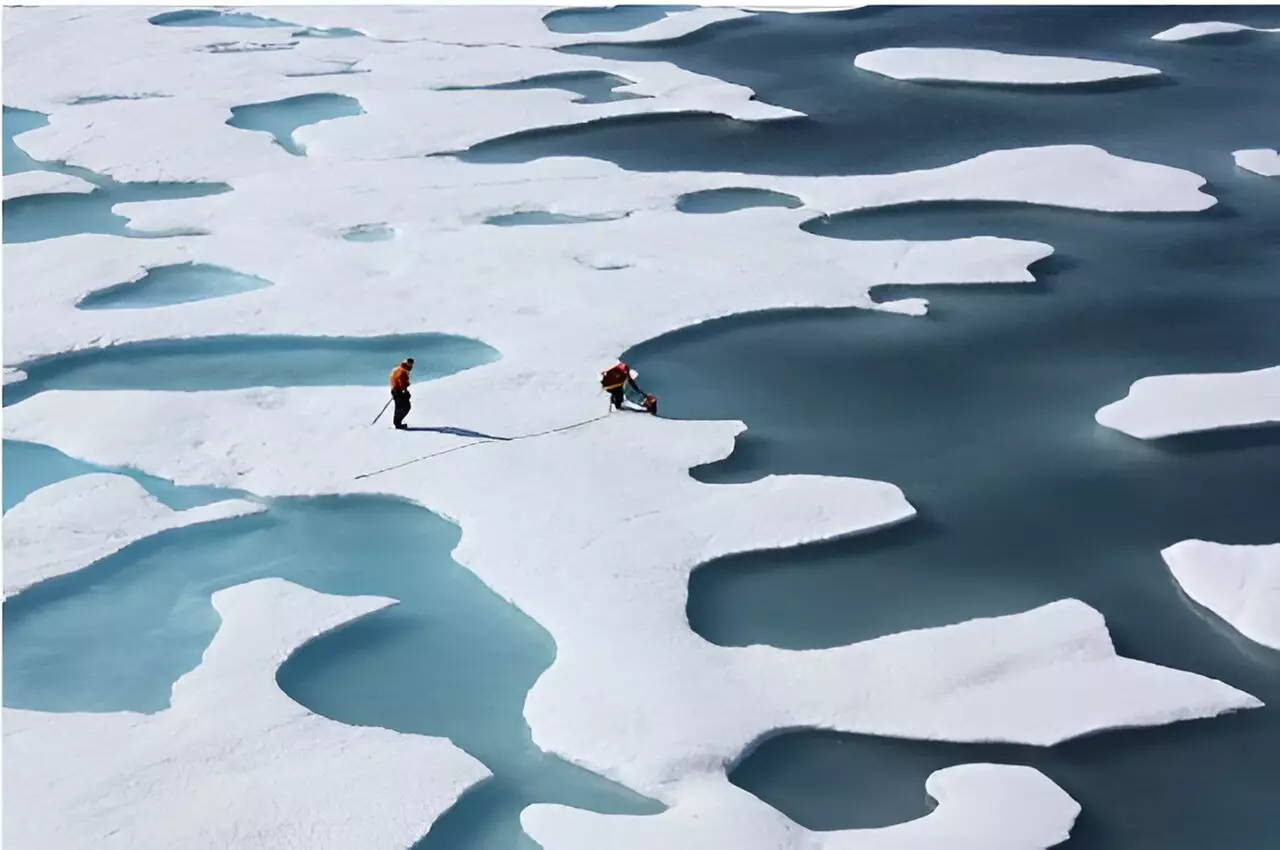Recent research from the University of Michigan has unveiled a stark reality: the vanishing sea ice in the Arctic and Antarctic is not just a local phenomenon but a global disaster in the making. Since 1980, the chilling effect of Arctic sea ice has diminished by nearly a quarter, while the world has seen a total cooling power loss of up to 15%. Such statistics are shocking, yet they pale in comparison to the broader implications of these changes on our planet’s climate system.
This study used advanced satellite technology to measure cloud coverage and solar radiation reflections associated with sea ice, revealing a striking disconnect between the visual disappearance of ice and its hidden impacts on global temperatures. The nuances of climate feedback mechanisms are often complex, but the researchers assert that the decline in cooling effects is essentially double that of the observed decrease in sea ice area. This unsettling data should alarm anyone who cares about the future of our planet.
Understanding Sea Ice’s Critical Role in Climate Regulation
The question remains: why is the decline in sea ice’s cooling power so significant? Sea ice acts as a crucial reflector of solar radiation; as it diminishes, the Earth’s surface absorbs more heat, exacerbating warming trends. The implications of this effect are especially pronounced in the Arctic, which has experienced consistent and severe losses in both ice area and reflection capabilities. This loss is not an isolated event—it reverberates throughout the global climate system, leading to consistent temperature increases across different regions.
Mark Flanner, a professor of climate science, highlights the long-term nature of climate simulations, which often require extended periods to demonstrate the consequences of ice melt on global temperatures. However, with an ample record of satellite data now available, we can more accurately assess how melting sea ice influences climate patterns in real-time, underscoring the urgency of addressing this crisis.
A Shifting Paradigm: The Antarctic’s Sudden Vulnerability
While the Arctic may appear to bear the brunt of sea ice loss, the study also sheds light on the relatively robust state of Antarctic ice until recently. The resilience of the Antarctic ice cap was once a cause for cautious optimism. However, in 2016, a significant event—the melting of an area larger than Texas on one of Antarctica’s largest ice shelves—signaled a dramatic shift. In the years that followed, the cooling effect of Antarctic sea ice has diminished significantly, countering any previous assumptions of its stability and leading to the weakest global cooling impact reported since the early 1980s.
This changing narrative requires a reevaluation of our understanding of ice dynamics. The Antarctic could no longer be seen as a distant sanctuary from climate change impacts; its cooling effects are rapidly fading, adding further urgency to global climate concerns.
The Hidden Mechanisms of Warming: Thinner, Wetter Ice
The research reveals an additional, lesser-known facet of how sea ice is transforming. The remaining ice is growing less reflective, a worrying development linked to two primary factors: rising temperatures and increased rainfall. Thinner, wet ice creates more melt ponds, which absorb rather than reflect sunlight. This phenomenon is particularly noticeable in Arctic regions, where the summer sun is becoming increasingly effective at warming the ocean beneath the ice.
Interestingly, this effect is not limited to the Arctic; it raises crucial questions about how similar transformations might unfold in Antarctic regions. As researchers like Alisher Duspayev indicate, critiquing our previous assumptions could unveil a significant portion of energy absorption not previously accounted for. Ignoring these changes might mean underestimating the overall impacts on global temperature increases.
Implications for Climate Policy and Adaptation Strategies
The study urges the climate science community to take these findings seriously and integrate the new data on sea ice’s diminished cooling power into climate adaptation plans. As the ramifications of altered sea ice radiative cooling start to manifest across the globe, we must adjust our approaches to climate resilience. The time for passive observation has passed; proactive measures and innovative policies are crucial to mitigating these extensive and far-reaching impacts.
In light of the changes unfolding in both the Arctic and Antarctic, understanding the full spectrum of sea ice’s effects on climate is more urgent than ever. Policymakers and scientists must collaboratively refine strategies, ensuring that our response to climate change is swift, informed, and based on the latest scientific insights. Only then can we hope to curb the trajectory of global warming and protect our increasingly fragile planet.


Leave a Reply